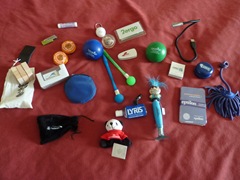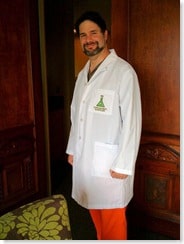Lessons from DMA 09
It was a room full of very smart, inquisitive and curious communicators. We spent two days immersed in the challenge of giving our Web site visitors what they need, and in doing so, knew we’d be growing our businesses.
You know the experience: you’re engaged in a conversation or a training or reading a book, and you KNOW everything you’re taking in is true. In fact, you already new much of it.
But, at work, where you’re supposed to be exercising these truths, conversations like this don’t happen. What is that all about?
We covered a lot of ground in my DMA 90 pre-conference intensive “Optimizing Your Web Site for Conversion and Business Success.” I learned a great deal from my audience.
But underneath the energy was an undertow dragging us away from shore. It was the knowledge that we would be returning to marketing departments that are understaffed, under budgeted, and — worst of all — focused on the wrong things.
I heard it from many attendees.
We don’t have the resources to do the things we need to do
Dear CMO, have you considered building an organization that doesn’t have the resources to NOT do the things you need to do? What would that look like?
Let them communicate
It would be a group of people so focused on delivering content that the prospect needs, that they wouldn’t even consider wasting time on the self-aggrandizing, posing communication that so many brands seem to treasure.
Clear the obstacles
They would sweep obstacles out of the way (this is really your job, CMO) so that they could communicate faster, with better data and known results.
They would have ways of working with IT and legal so that their communications are frequent, human and transparent.
Let them experiment
They would make many mistakes, but they would only make them once. They would know which half of their advertising wasn’t working.
Think of an entrepreneurial product development group.
Let them publish
They would produce a volume of content far greater than they do now, with greater accuracy, consistency and efficiency.
Think of a world-class newspaper.
Marketers, take the reigns
If you want to see the most amazing collection of schwag, go to a marketing conference. What surprised me was the amount of goodies that were given away without any qualifying activity.
This is not lead generation or even demand generation.
If you get the freedom to communicate, do so with all of your heart, knowledge and art.
If you want to join a group of marketers and business owners bent on communicating, join us on December 10 in Austin, Texas for the BYO Content Extreme Conversion Makeover. You’ll soon have the leads and revenues that prove you’re a communicator.
‘Bring your most tired white papers, your most mundane articles, and your raw video. We’ll show you how to weave it into a conversion scenario that will generate leads and sales for your business.
We’ll announce the details here shortly. Don’t miss the post.
















